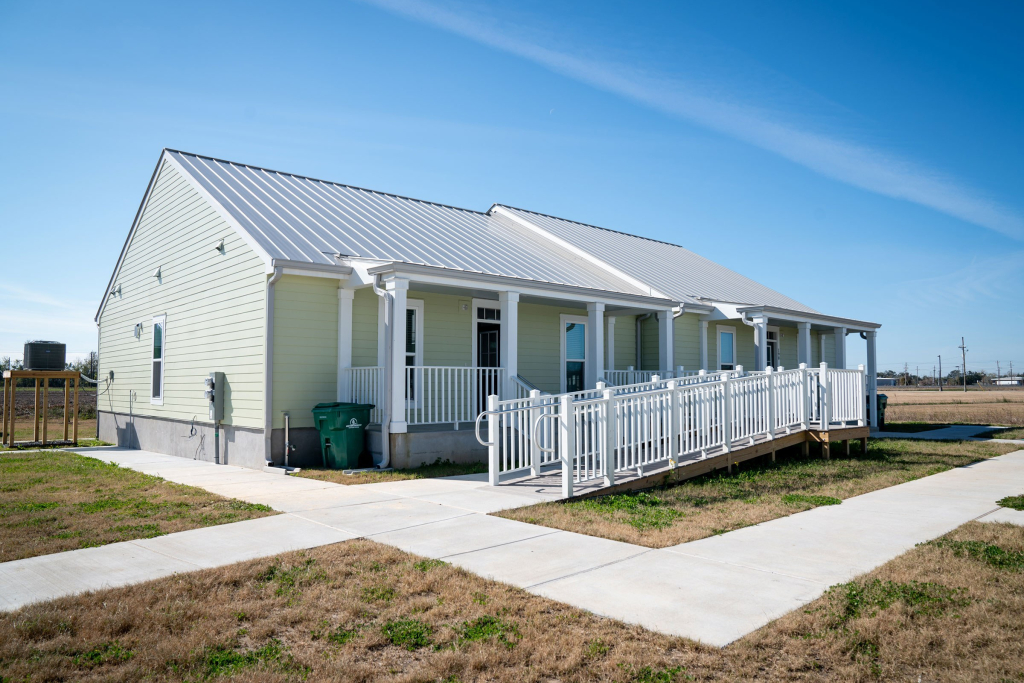Crisis Response
In December 2004, Housing Partnership Network (HPN) convened its 21st member meeting in New Orleans. Mayor Nagin welcomed the leaders at the opening plenary, which featured a discussion with the Urban Institute and Harvard’s Joint Center for Housing Studies about a study HPN was undertaking of housing partnerships. There had been ongoing efforts to support CDCs in New Orleans and Baton Rouge, but production of affordable housing was limited, and no organization had emerged with significant development capacity or scale.
After hurricanes Katrina and Rita devastated the region in August 2005, more than 25 HPN member organizations supplied over 1,000 affordable apartments to evacuees from New Orleans and other Gulf Coast communities in Louisiana and Mississippi. As members shared strategies and workarounds through an HPN-facilitated peer exchange, they decided to contribute their housing and community development expertise to the permanent rebuilding effort. In October 2005, a determined group of HPN members and staff commandeered an RV in Fort Myers, Florida to make the journey to New Orleans, finding the city inaccessible in the hurricanes' immediate aftermath.
The goal of this reconnaissance trip was to meet with community and civic leaders to decide how to play a systemic, long-term role in the region’s redevelopment effort.
A New Model
From these first meetings, and HPN members’ experience housing evacuees, emerged the proposal and strategy to form Gulf Coast Housing Partnership (GCHP). The explicit aim was to create an independent nonprofit—modeled after the best practices of HPN members from around the country — to set up a high-capacity, mission-based developer capable of helping local partners rebuild.
Kathy Laborde, who ran an affordable housing consulting business in New Orleans called Kaliope, LLC., was highly regarded and recommended by many nonprofit, government, and private sector leaders as the best, if not the only, person who could start-up and run such an ambitious undertaking. Compelled by the collective vision for the region, Kathy agreed to be GCHP’s founding CEO and joined the HPN staff in January 2006. She led the effort to revise GCHP’s business strategy and present the final plan adopted by the HPN board in February 2006.
“When HPN first approached me in 2006, I could tell immediately that their mission and visions aligned with mine. Even more importantly, they understood the risks associated with affordable housing development and the capital needed to be successful.”
Kathy Laborde President and CEO, GCHP
Ongoing Impact
Today, 17 years since its formation, GCHP has created or preserved almost 4,500 affordable units. Its 85 residential and commercial projects have been developed with 70+ unique partners, who have received over $13 million in distributions from GCHP. GCHP has become the strongest and most impactful nonprofit developer in the region, with projects and partnerships in Louisiana, Mississippi, Alabama, and Texas.
The organization has taken a comprehensive approach to addressing the housing and community revitalization needs of the region, including multifamily development and preservation, homeownership, and supportive housing, as well as mixed-use and commercial projects.
On the capital front, GCHP has also made tremendous progress. Starting with just $2 million in equity from HPN, and critical start-up grant support from the MacArthur Foundation, GCHP’s balance sheet now exceeds $440 million, with net unrestricted assets of over $175 million. It has secured over $30 million in enterprise lines of credit from 17 different funders and investors, including HPN, which now comprises just 10% of its enterprise capital.

Les Maisons de Bayou Lafourche- GCHP’s first storm resilient development located in Lockport, Louisiana
